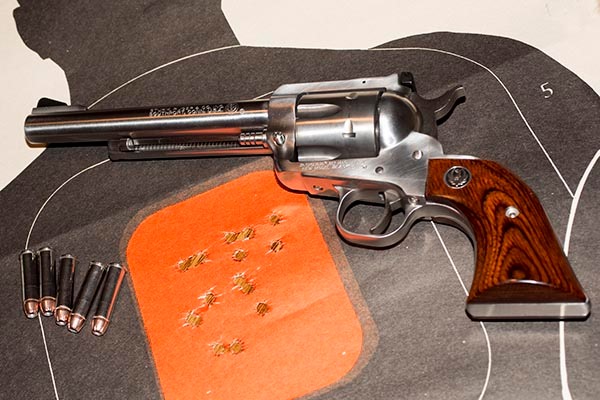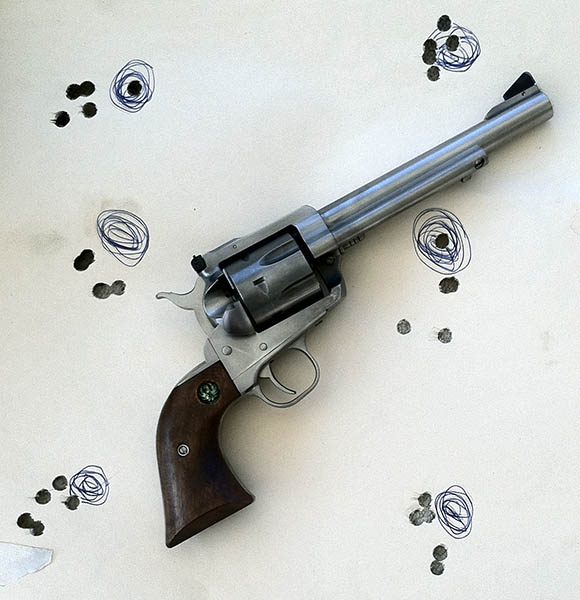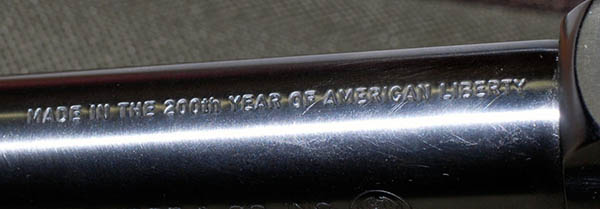
One of my good buddies wrote to me over the weekend asking about the Ruger Blackhawk in .357 Magnum. He wanted to know if I felt they were good guns. In a word: Yes. My friend was specifically considering the .357 Blackhawk with the extra cylinder for 9mm ammo; I’m not a big fan of the combo Blackhawks (I think they’re a solution to a problem that doesn’t exist). But the basic .357 Blackhawk? It’s a winner, and I think it’s one of the world’s great handguns.
I’ve owned several .357 Blackhawks over the last 50 years, starting with a plain vanilla blue steel New Model I bought at a K-Mart when I lived in El Paso (yep, they used to sell handguns). I traded that one away, and then I bought an Old Model Blackhawk with the convertible 9mm cylinder. It was a pristine used gun, still in the original box, with the shorter 4 5/8-inch barrel. I never fired that gun and I only owned it for about a week. I paid something like $75 for it, and then I sold it to my boss at Fort Bliss a few days later because he wanted it. That Old Model with its convertible 9mm cylinder would be collectible today. Eh, live and learn, I guess.
There were two convertible Blackhawks back in the 1970s, and I guess there are still two available new today. One is the 9mm/.357 combo I described above; the other is the .45 ACP/.45 Colt deal. I had a New Model Blackhawk .45 ACP/.45 Colt around the same time as I bought that Old Model 9mm/.357. I only shot .45 ACP in it because I had a ready supply of .45 ACP ammo. Mine wasn’t very accurate. It might have been because the .45 ACP bullet had to make a big jump to the rifling (it’s a shorter cartridge), or it might have been that I just had the wrong .45 ACP load for that revolver. I think the same accuracy detractors exist with the 9mm/.357 arrangement. The accuracy challenge is perhaps even more significant for the 9mm Blackhawk because of the slight difference in bore diameters between the 9mm and the .357 (the barrel diameter is .357 inches; the 9mm bullets are .355 or .356 inches in diameter). If you have the .357 Blackhawk with the extra 9mm cylinder, you can actually shoot three cartridges in it (9mm from the one cylinder, and 38 Special and 357 Magnum from the other). But I don’t have an interest in any of that. I only shoot .357 Magnum in mine.
My .357 Blackhawk is the stainless model you see in the photo above. It’s accurate (I can usually hold all my shots in the 10-ring of a silhouette target at 25 yards). They are super strong and I think they are more rugged than a Smith and Wesson. I sold all my S&W 357s years ago. And on that subject, I owned a couple of Colt Pythons back in the 1970s and I sold them, too. I never understand all the excitement over the Pythons; their fit and finish was great, but they didn’t shoot any better than the Blackhawk (at least in my hands).

There are several variants of the Blackhawk; I have the full-sized Blackhawk with the 6½-inch barrel. I like the feel of it, I like the grip, and as a kid who grew up watching Westerns, I like the idea of a single-action sixgun. Today, Ruger makes several variants of their .357 Blackhawk. There are fixed-sight versions they call the Vaquero, smaller frame versions they call the flat top, different barrel lengths, stainless models, blue steel models, and more. I like the stainless version because the grip is made of steel; in the blue version it’s anodized aluminum. The stainless grip is a little heavier and the gun feels better to me. But there’s nothing wrong with the blued-steel Blackhawk. They are great guns.

I like loading the .357 ammo, too, and I loaded a bunch this weekend. It’s a cool cartridge to reload. WW 296 is my preferred propellant. Unique does okay, too, but 296 is the cat’s meow for the .357 Magnum cartridge. It’s a flat-shooting cartridge, and I can hit consistently with it all the way out to 200 yards. I may set up a target or two at that distance the next time I’m on the range just to back up that statement.
Want more? Check out our other Tales of the Gun stories!
